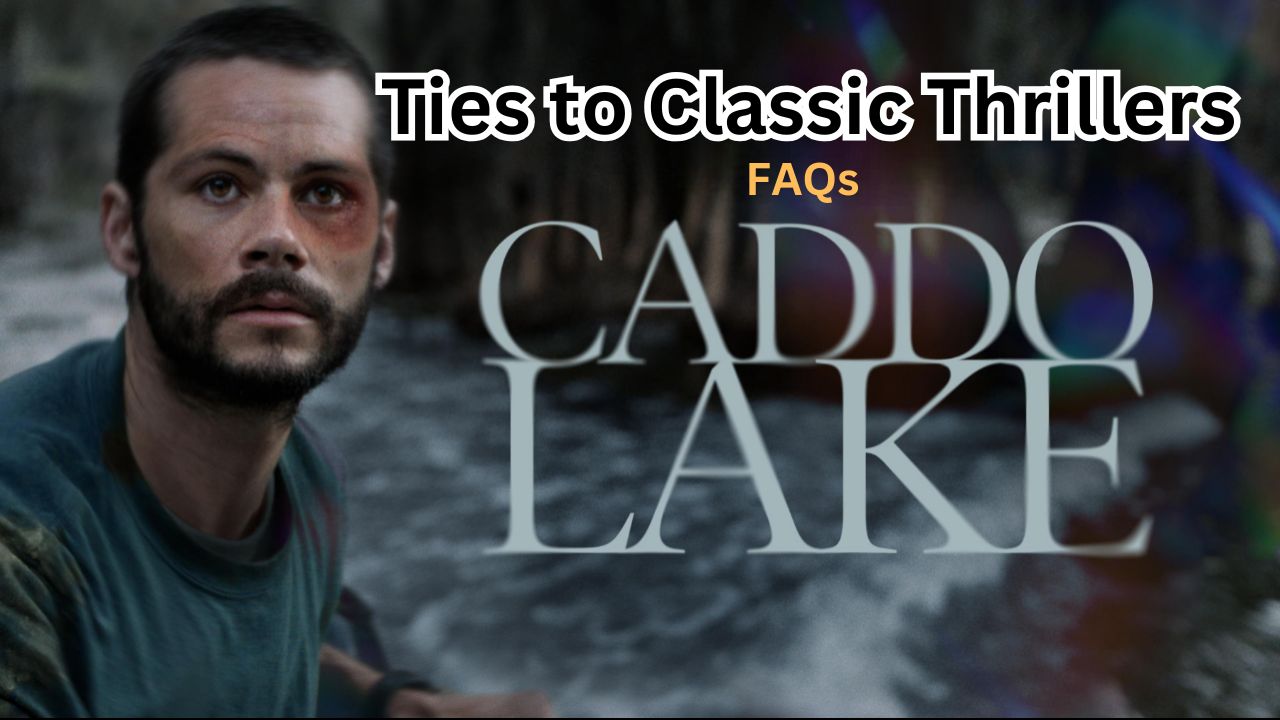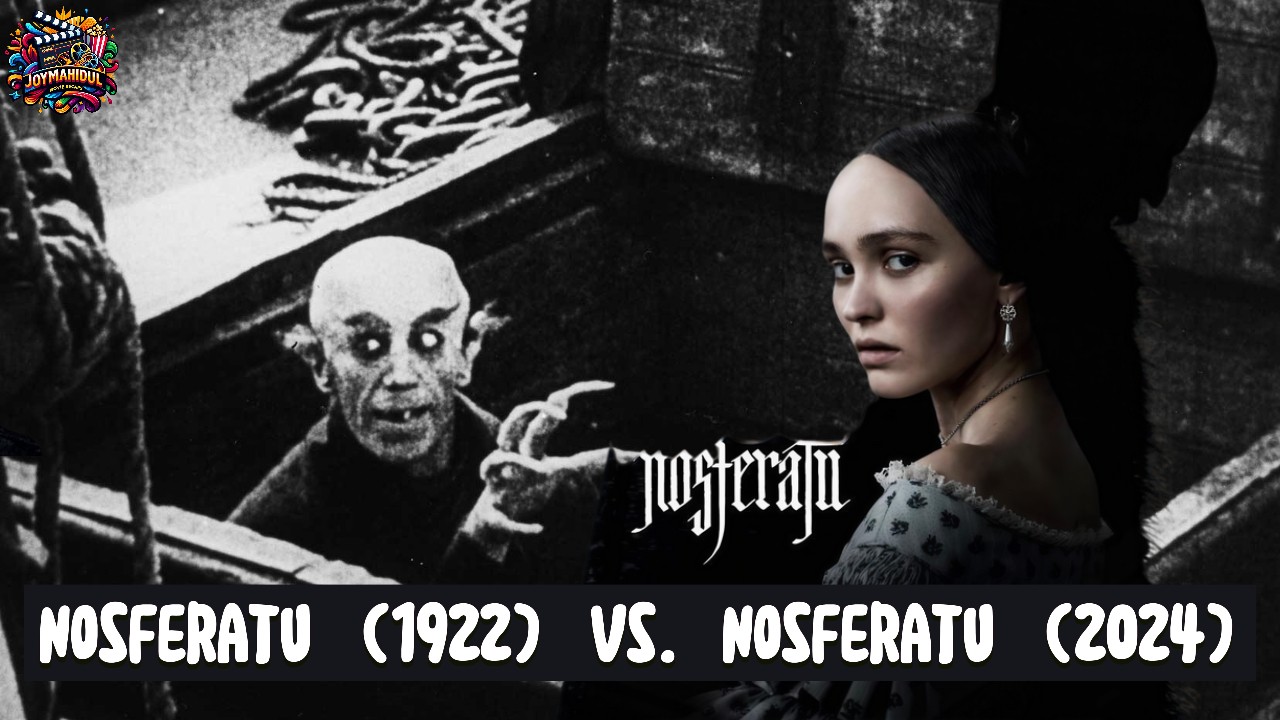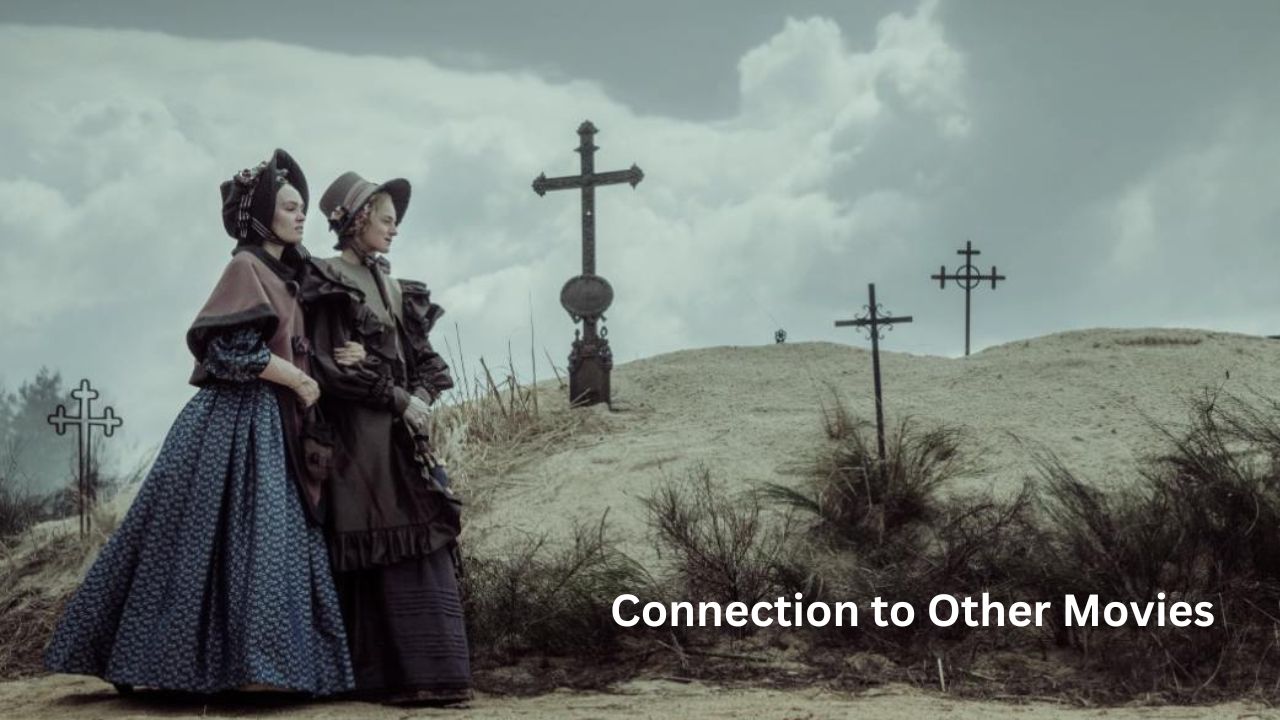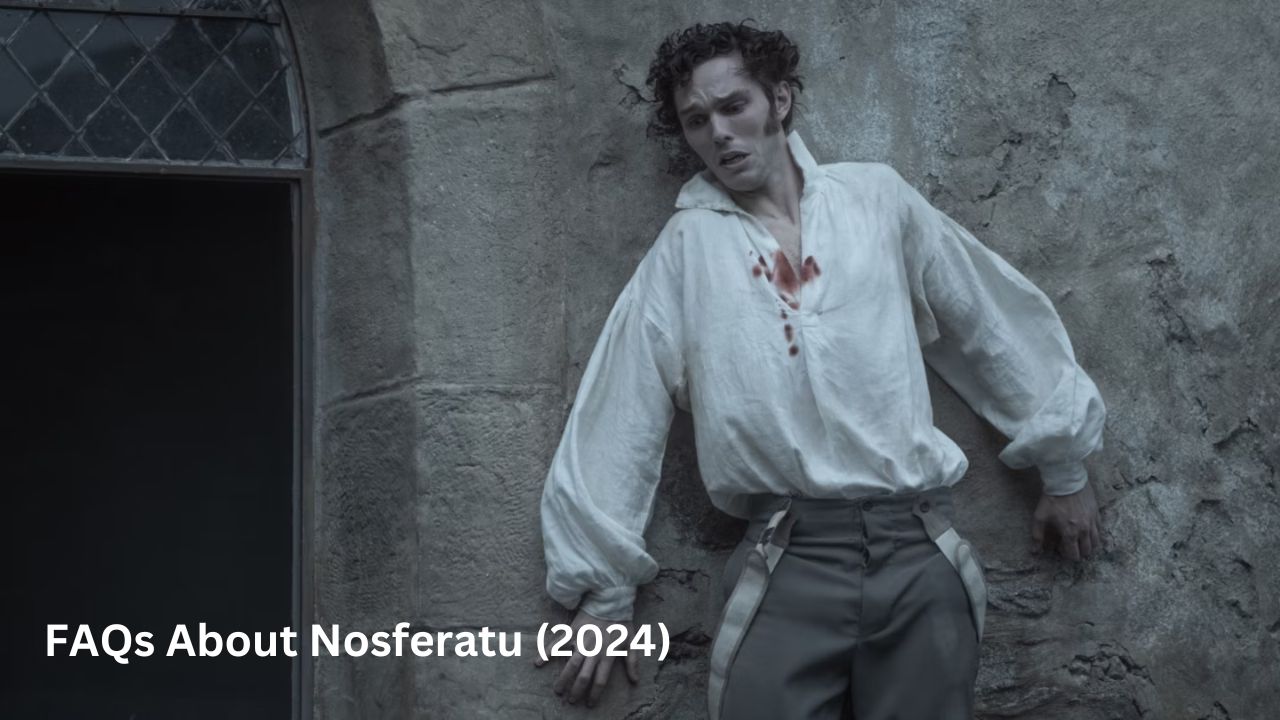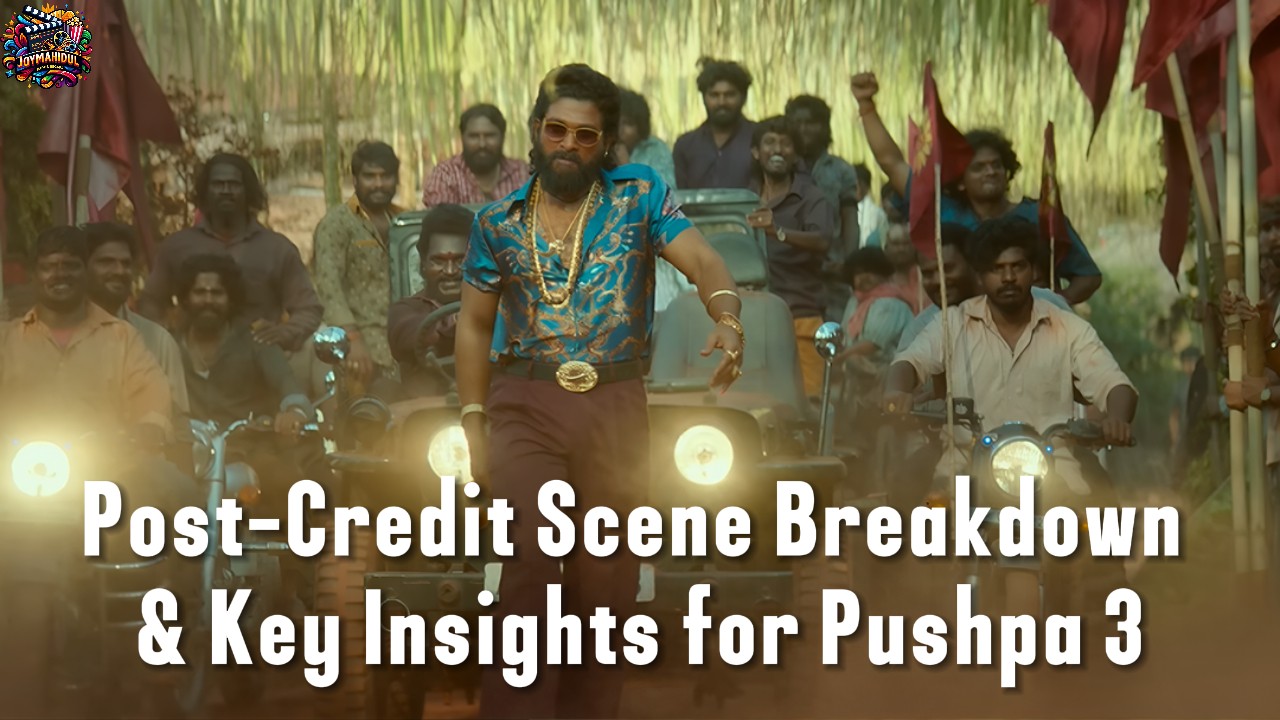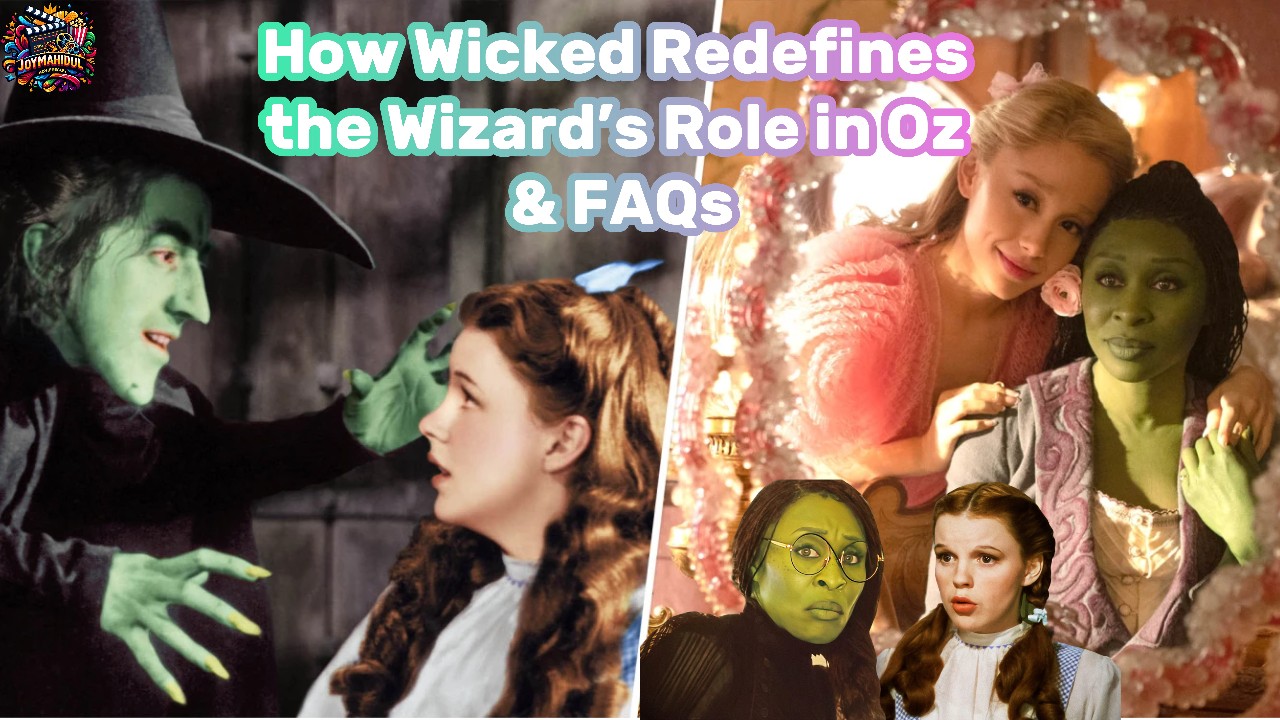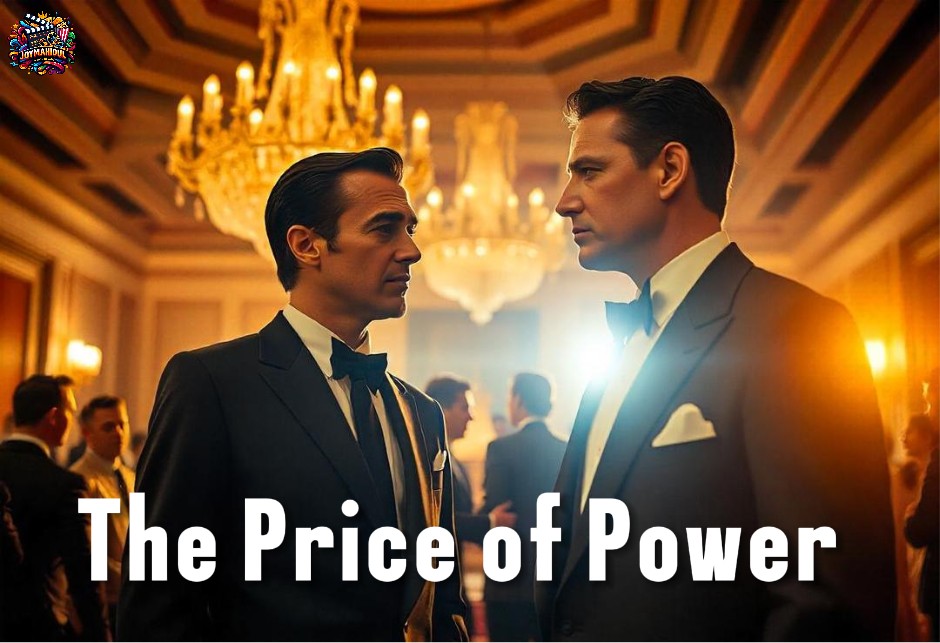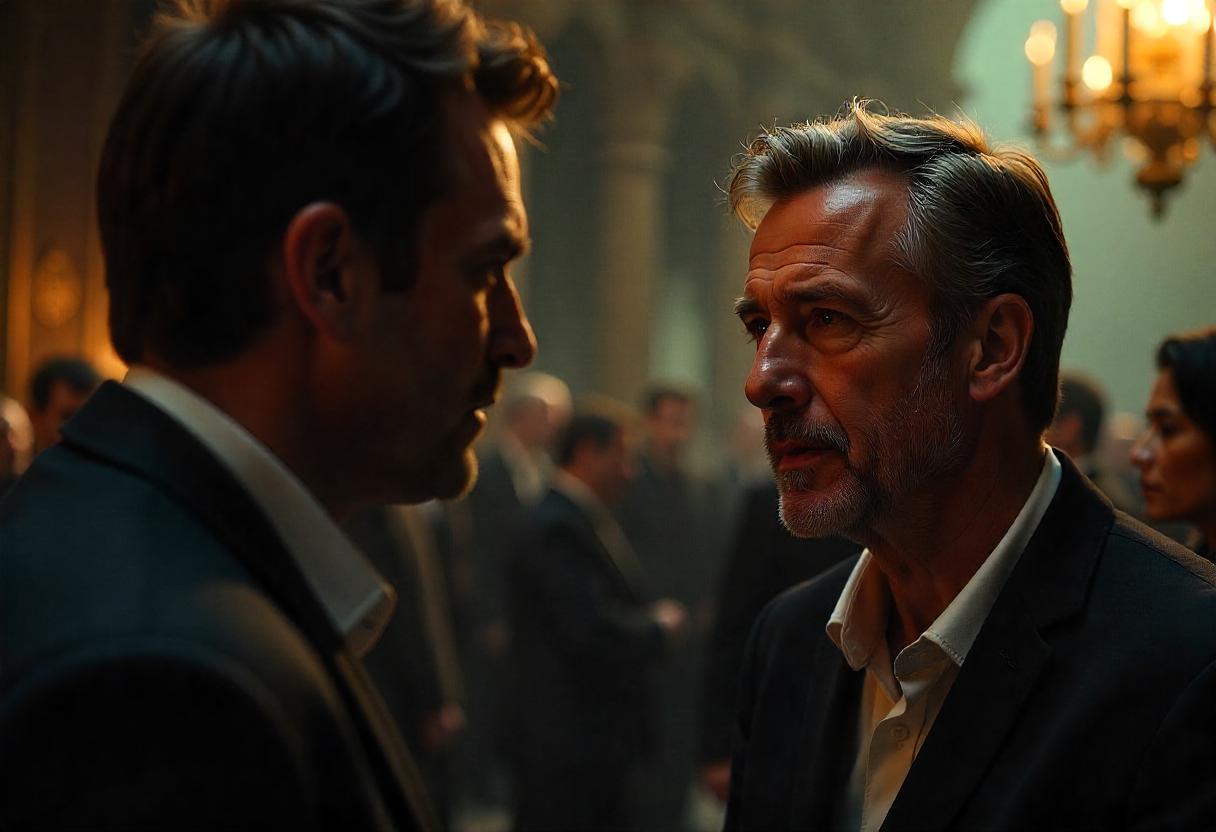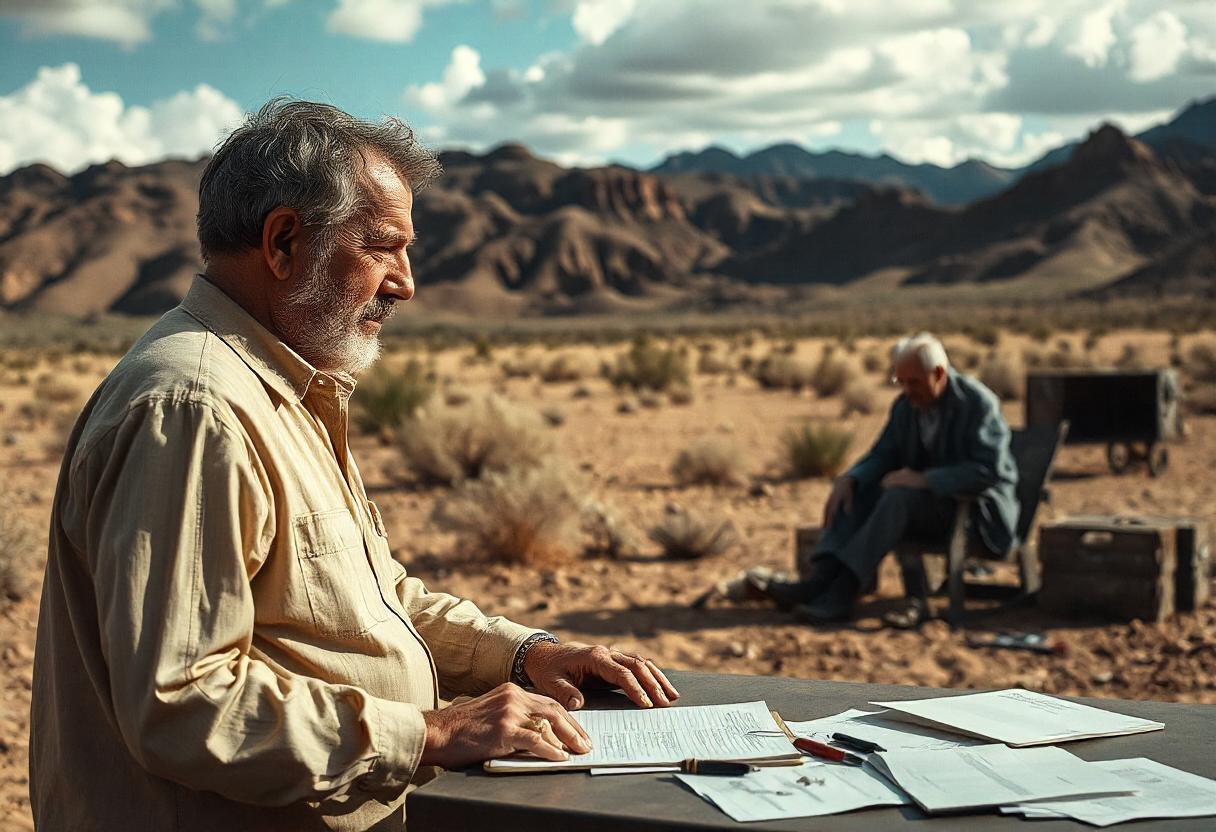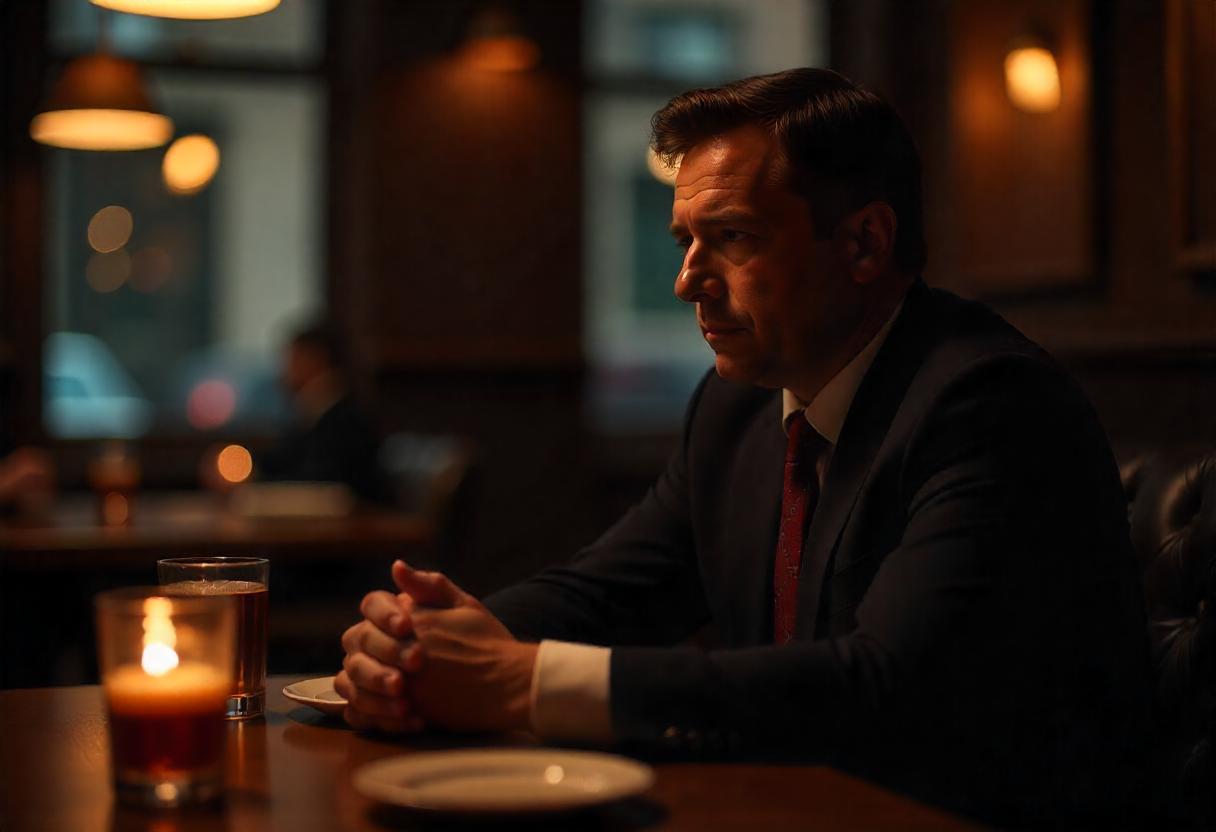How M. Night Shyamalan’s Latest Thriller Revisits the Golden Era of Suspense and Horror Films
Uncover the haunting mysteries of Caddo Lake (2024) and its stunning parallels to classic thrillers from the 80s and 90s. Dive into the hidden connections that will leave you speechless!
The Connection Between Caddo Lake (2024) and Old Classic Thriller Films
M. Night Shyamalan’s Caddo Lake (2024) pays homage to the suspense and supernatural intrigue of the 80s and 90s thrillers. It combines the styles of Alfred Hitchcock and Stanley Kubrick, creating a haunting atmosphere. The film’s blend of tension, complex characters, and twists makes it a standout in today’s thriller genre.
In this article, we’ll explore how Caddo Lake captures the thrilling atmosphere and supernatural elements of classic films. By comparing it with six classic films, we’ll see the thematic and stylistic similarities. This shows how Caddo Lake draws inspiration from cinematic history while offering a fresh take on the genre.
1. Atmospheric Suspense Inspired by Hitchcock and Kubrick
Alfred Hitchcock and Stanley Kubrick are giants in the thriller and horror genres. They used atmosphere to create tension and suspense, a technique Caddo Lake employs well. Hitchcock’s Psycho (1960) and Kubrick’s The Shining (1980) are iconic for their chilling atmospheres.
In Psycho, Hitchcock uses the Bates Motel to establish dread. Caddo Lake uses the misty, dark waters of the lake to create fear and unease. The film’s visuals and sense of isolation immerse viewers in the environment, where strange events and secrets lurk.
Like the Bates Motel or the Overlook Hotel, the lake setting in Caddo Lake heightens the emotional and psychological tension. In The Shining, Kubrick traps the Torrance family in the Overlook Hotel, amplifying their psychological breakdowns. Caddo Lake uses a similar approach, trapping Paris and Ellie in the lake’s mysterious powers.
2. Supernatural Elements – A Nod to Classic Horror
One of the standout aspects of Caddo Lake is its supernatural theme. The lake holds a secret: it is a portal to another dimension. This supernatural element ties the film to classic horror films like The Twilight Zone (1959–1964) and The Haunting (1963), both of which explore the blurring of the line between reality and the unknown.
The Twilight Zone was known for its twists, where ordinary situations were often turned on their heads, and reality itself seemed to warp. In a similar fashion, Caddo Lake toys with the audience’s sense of reality, where the supernatural elements of the lake challenge what the characters, and the viewers, believe to be true. As the film progresses, it becomes harder to distinguish what is real and what is a manifestation of the lake’s mysterious powers, creating a sense of unease similar to the disorienting and mind-bending scenarios presented in The Twilight Zone.
The Haunting, another classic supernatural horror film, centers around a group of individuals who investigate a supposedly haunted mansion, where eerie phenomena and unsettling forces suggest that the supernatural world is intruding on their own. Similarly, in Caddo Lake, Paris and Ellie’s journey to uncover the truth about their pasts intertwines with the haunting and supernatural forces of the lake. The portal to another dimension is a way for the film to explore themes of loss, grief, and the unknown, much like the otherworldly forces in The Haunting.
3. Complex Characters and Psychological Depth
Caddo Lake features complex characters, like Norman Bates in Psycho and Jack Torrance in The Shining. Paris and Ellie are haunted by their pasts. Paris deals with his mother’s death, while Ellie faces her father’s disappearance and family issues.
These characters’ emotional journeys are deep, like in Hitchcock and Kubrick’s films. Their inner turmoil is as crucial as the external events.
In Psycho, Norman Bates’ inner conflict is key. His twisted relationship with his mother drives the film’s horror. In The Shining, Jack Torrance’s madness is influenced by personal demons and the Overlook Hotel.
Paris and Ellie’s struggles in Caddo Lake mirror Bates and Torrance’s. Their emotional depth and psychological scars are highlighted. The supernatural elements serve as a metaphor for their trauma.
4. The Use of Mystery and Unanswered Questions
Caddo Lake keeps viewers guessing until the end. Like The Sixth Sense (1999), it uses mystery to build tension. The film is full of secrets, unexplained disappearances, and supernatural occurrences.
In The Sixth Sense, Bruce Willis’ character’s fate is central. The twist is what makes it a classic. Caddo Lake also leaves viewers questioning reality and who to trust.
Classic thrillers like The Blair Witch Project (1999) and The Silence of the Lambs (1991) also use mystery. They leave audiences with questions about characters’ motives and the events’ true nature. Caddo Lake keeps viewers engaged with its mysteries.
5. The Use of Visual Storytelling and Cinematic Techniques
The classical films exhibited by Hitchcock and Kubrick are also attributed with their amazing visual storytelling. Particularly, Psycho uses unequal framing and camera angles, while The Shining entails some of the best tracking actions, reflecting this tension and discomfort in both films. Caddo Lake brings this same kind of cinema into play, reinforcing the whole atmosphere and suspense. Its misty, dusky waters are usually scored in wide shots, emphasizing the sheer hugeness of it and the great isolation from which the characters feel they are suffering. Close-up shots show the fear and worry on the expressive faces of the characters. This is then subtly supplemented by the allusions to the supernatural playing within shadowy and surreal visuals.
Somewhat like the Overlook Hotel in the Shining or Bates Motel in Psycho, the lake itself acts as a character in the film. This more påsync with the camera gazing at the lake with its dark waters and the strange things happening within it adds chill to the drama. This visual storytelling when married to the uniquely Shyamalan style of suspense and misdirection makes stunning thrills out of what should have been an emotionally involving activity.
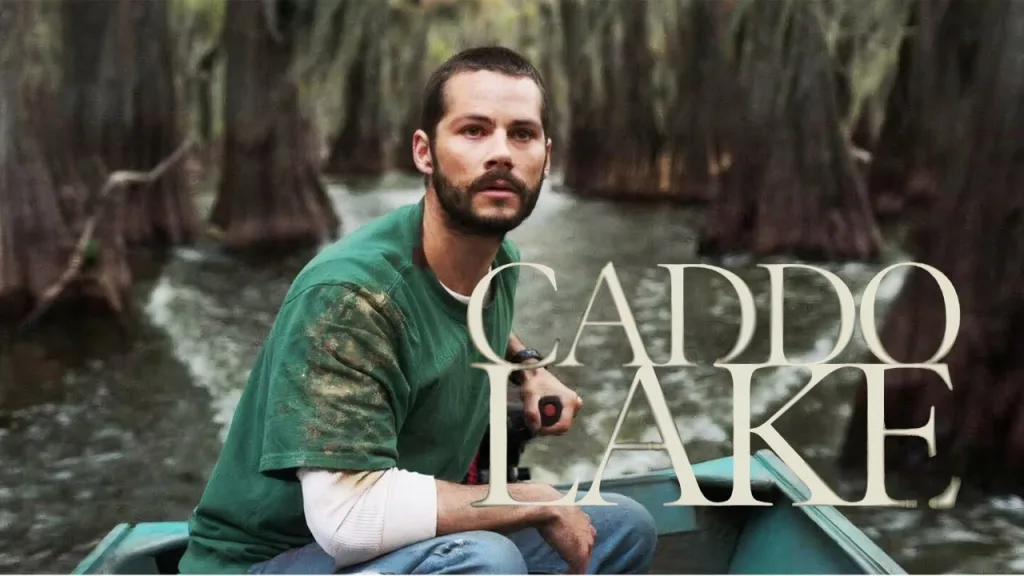
6. Unpredictable Plot Twists and Shocking Endings
Finally, any Shyamalan film hallmark is the unpredictable climax. In the same league as The Sixth Sense, The Village (2004), and Signs (2002), Caddo Lake is able to toy with the expectations of its audience and leave one stunned by its shocking denouement, tightly stitching the myriad mysteries. The catharsis at the end of Caddo Lake is not only so mind-jarring but also emotionally stimulating: it leaves the viewers’ senses as aurified and stupefied.
Classic thrillers, like Se7en (1995) and The Usual Suspects (1995), are also famous for unforgettable plot twists. These films misdirect the audience, tell stories, and stage endings so that the audience flabbergasts with what they thought they knew. It follows Caddo Lake, wherein surprise is not enough; it also adds emotional weight to the phenome- characterizing travel at the end.
Surprising Similarities Between Caddo Lake (2024) and Classic Thriller Films
Caddo Lake (2024) by M. Night Shyamalan is thrilling and has unexpected links to classic films. These connections bring back memories and show respect for the past while introducing new stories.
1. The Shining (1980): The Power of Isolation
Both Caddo Lake and The Shining thrive on atmospheric isolation. In The Shining, the Overlook Hotel becomes a claustrophobic environment that intensifies the characters’ psychological breakdowns. Similarly, Caddo Lake uses its titular location—a misty, mysterious lake—to evoke a sense of eerie seclusion.
The lake, like the hotel, feels alive, acting as both a setting and a character. It influences events, hides secrets, and amplifies the internal conflicts of the protagonists. Paris’ haunting grief and Ellie’s strained family dynamics parallel Jack Torrance’s unraveling mental state in The Shining.
2. Poltergeist (1982): The Supernatural Threat
Caddo Lake explores supernatural themes like Poltergeist. Both films deal with mysterious events and family struggles. They make us question what’s real and what’s not.
3. Silence of the Lambs (1991): The Search for Truth
Caddo Lake and Silence of the Lambs both focus on uncovering dark secrets. Paris and Ellie’s search for loved ones mirrors Clarice Starling’s quest. Both stories show human vulnerability.
4. The Sixth Sense (1999): Emotional Supernatural Connections
It’s no surprise that Caddo Lake bears similarities to The Sixth Sense, another Shyamalan masterpiece. Both films use supernatural elements to explore grief and loss. The twist in Caddo Lake, involving the portal to another dimension, mirrors the shocking revelation in The Sixth Sense about Bruce Willis’ character.
Both movies keep viewers on edge with their masterful misdirection. While the audience focuses on surface-level mysteries, the deeper truths sneak up on them, delivering a cathartic and mind-bending experience.
5. A Nightmare on Elm Street (1984): The Threat of the Unknown
Caddo Lake and A Nightmare on Elm Street share a common theme: the fear of an unseen enemy. Shyamalan’s film mirrors Freddy Krueger’s dream attacks, where reality and fear mix. Both create a sense of unease.
6. Twin Peaks: Fire Walk With Me (1992): Surreal Mystery
Caddo Lake is like David Lynch’s Twin Peaks in its surreal storytelling. It combines folklore, psychological tension, and the supernatural. Both leave viewers wanting more, with mysteries that linger.
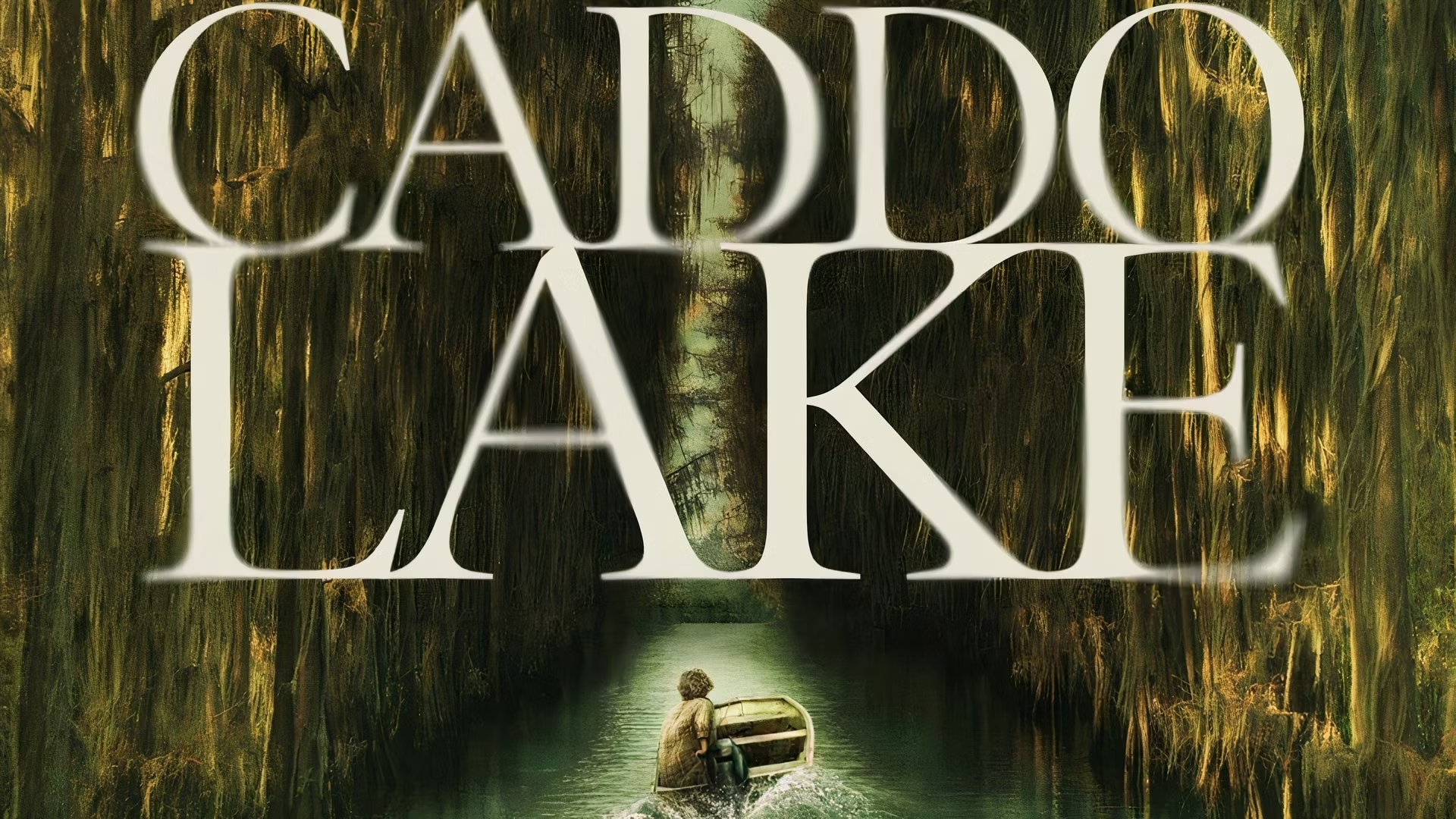
Top 5 FAQs About Caddo Lake (2024) and Its Connection to Classic Thrillers
1. How does Caddo Lake (2024) compare to Alfred Hitchcock’s Psycho (1960)?
Caddo Lake and Psycho both use eerie settings to create tension. The lake in Caddo Lake is like the Bates Motel, full of secrets. It adds depth to the story.
2. What supernatural elements in Caddo Lake echo films like The Twilight Zone and Poltergeist?
Caddo Lake has a portal to another world, mixing reality and mystery. This is similar to The Twilight Zone’s twists and Poltergeist’s otherworldly threats. It makes the story suspenseful.
3. Why is Caddo Lake often compared to The Shining (1980)?
Caddo Lake and The Shining both use isolation to increase tension. The lake and the Overlook Hotel trap characters, making their fears worse.
4. What makes Caddo Lake similar to The Sixth Sense (1999)?
Both are by M. Night Shyamalan and deal with grief and loss. The twist in Caddo Lake is like The Sixth Sense’s big reveal, changing how we see the story.
5. How does Caddo Lake stand out in the modern thriller genre?
Caddo Lake mixes classic thriller elements with Shyamalan’s twists. It offers a new take on thrillers with its mystery, character focus, and visuals.
Conclusion
Caddo Lake takes inspiration from classic thrillers, offering a fresh spin on old themes. It pays homage to the golden age of thrillers while forging its path. The film’s blend of suspense, mystery, and psychological depth makes it a standout.
M. Night Shyamalan’s Caddo Lake is a thrilling film that mixes classic thriller elements with a modern twist. It draws from Hitchcock’s Psycho and Kubrick’s The Shining for atmosphere. It also takes cues from The Twilight Zone and The Haunting for its supernatural mystery.
It explores the psychological depth seen in Psycho and The Shining. And it features the unexpected plot twists found in The Sixth Sense. With its captivating setting, complex characters, and mysterious plot, Caddo Lake shows that thrillers can still captivate and move us.
Caddo Lake (2024) Movie Review By Joymahidul & FAQs
Ratings from Top Review Sites and Personal Rating
- Rotten Tomatoes: 76%
- IMDb: 6.8/10
- Metacritic: 7.1/10
- The Wrap: Positive
- Deadline: 4/5
- My Rating: I would give “Caddo Lake” a strong 3 out of 5 stars. The film’s assets lie in its barometrical setting, solid exhibitions, and fascinating plot. While it could be trying to follow now and again, the general experience is fulfilling and provocative.
